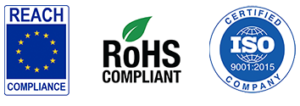Electrically conductive epoxy is a type of adhesive that not only bonds materials together but also conducts electricity. It is commonly used in various applications where both mechanical bonding and electrical conductivity are required. Here are some key points about electrically conductive epoxy: Composition and Types 1. Conductive Fillers: These epoxies typically contain conductive fillers such as silver, copper, nickel, or carbon. Silver is the most common due to its…
Paven PatelJune 18, 2024


